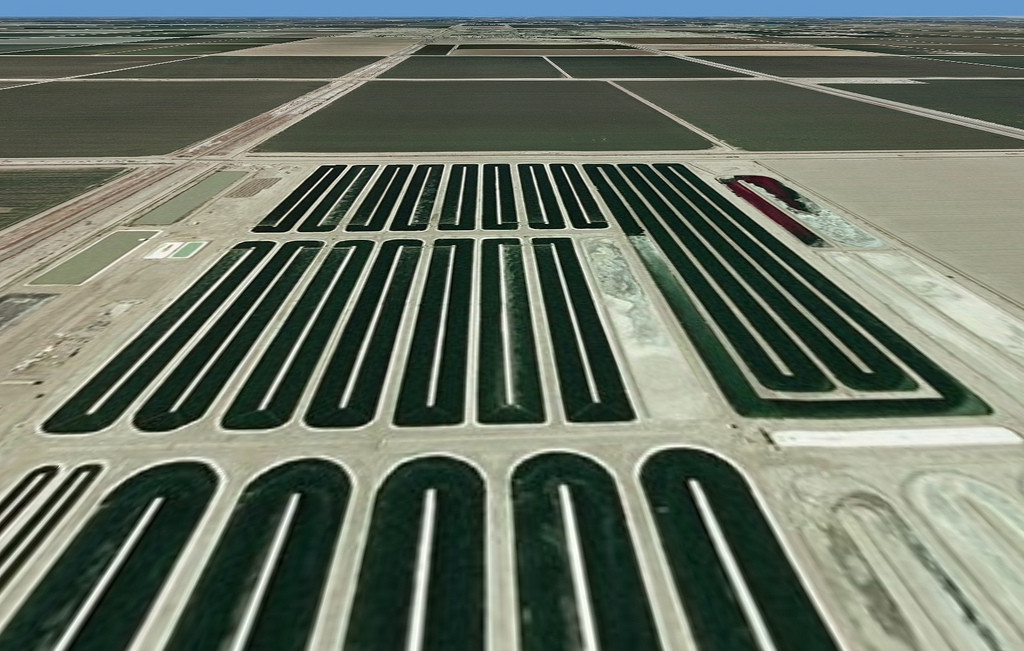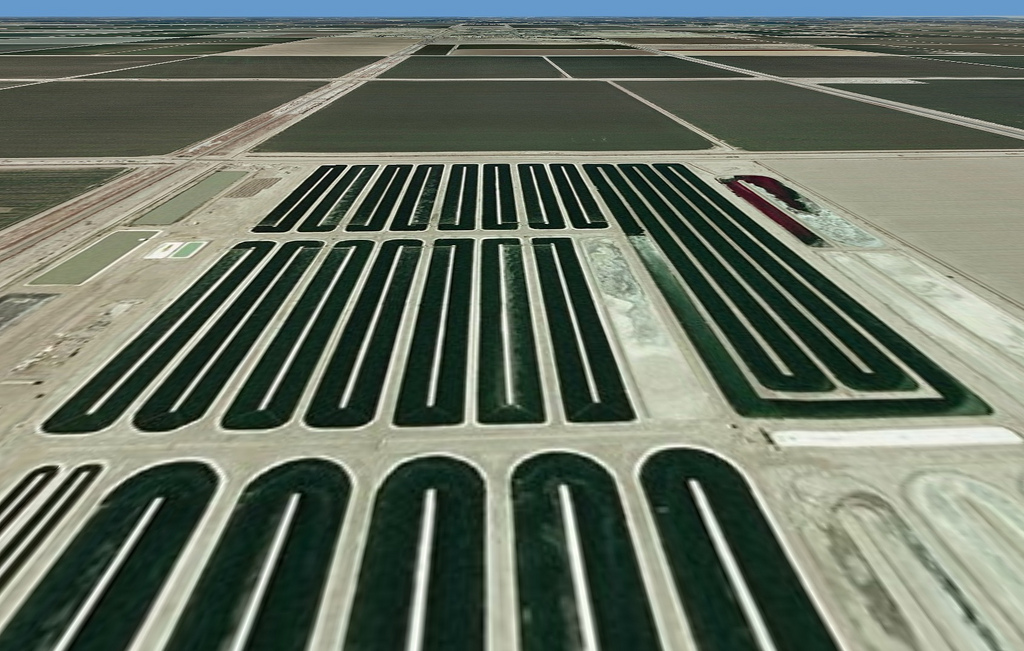
At the National Renewable Energy Laboratory and at dozens of other labs nationwide, scientists are trying to develop biofuels made from algae. Right now, a gallon of fuel made from algae costs four times as much as a gallon of conventional diesel, but researchers believe that the costs will come down dramatically over time.
Why the interest in algae? Algae have fifty times the productivity – in terms of biofuel output per acre – than terrestrial crops like corn. The Department of Energy estimates that if algae fuel replaced all the petroleum fuel in the United States, it would require 15,000 square miles to grow it, which is less than 1⁄7 the area of land devoted to growing corn in the United States.
Algae farms can also operate on marginal lands, such as in desert areas where the groundwater is saline, rather than utilizing fresh water. Algae can also grow on the surface of the ocean. Algae cultivation also requires no insecticides or herbicides, removing any risk of generating associated pesticide waste streams.
The key to biofuel productivity is the lipid content of the algae. Because algae strains with lower lipid content may grow as much as 30 times faster than those with high lipid content, the challenges in efficient biodiesel production from algae lie in finding an algal strain with a combination of high lipid-content and fast growth-rate, and with a cost-effective cultivation system best suited to that strain.
If these efforts are successful, algae could be an inexhaustible resource of a fuel that would lead to reduced greenhouse gas production, energy security, and job creation.
**********
.
Web Links
Biofuel Opportunity: Reviving Algae from the (Almost) Dead
Photo, posted April 11, 2011, courtesy of the Pacific Northwest National Laboratory via Flickr.
.
Earth Wise is a production of WAMC Northeast Public Radio.
